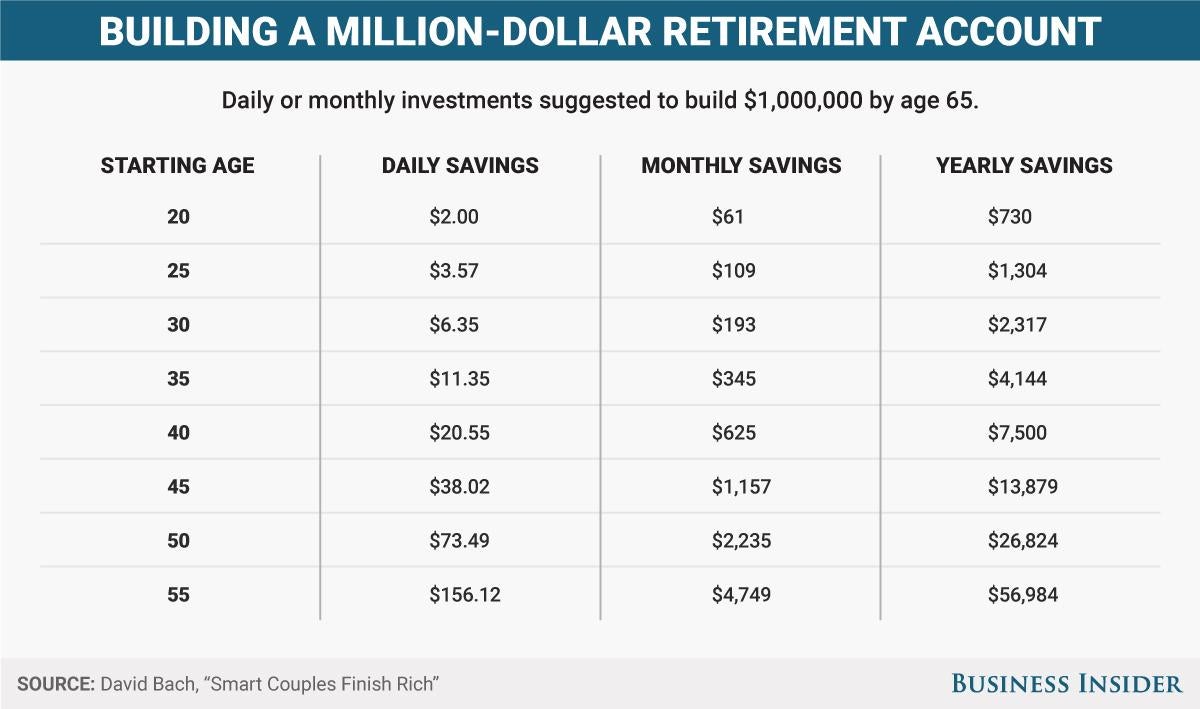The Independent's journalism is supported by our readers. When you purchase through links on our site, we may earn commission.
How much money you need to save each day to become a millionaire by age 65

If you want to get rich, start investing — and start as early as you possibly can.
"Becoming rich is nothing more than a matter of committing and sticking to a systematic savings and investment plan," financial adviser David Bach writes in his book "Smart Couples Finish Rich."
"You don't need to have money to make money," he writes. "You just need to make the right decisions — and act on them."

To illustrate the simplicity of building wealth over time, Bach created a chart (which we re-created below) detailing how much money you need to set aside each day, month, or year in order to have $1 million saved by the time you're 65.
The chart assumes you're starting with zero dollars invested. It also assumes a 12% annual return.
You can start by investing in your employer's 401(k) plan — an easy, automatic contribution — and then consider contributing money toward a Roth IRA or traditional IRA, individual retirement accounts with different contribution limits and tax structures.
While the numbers in the chart below are not exact (for simplicity, it does not take into account the impact of taxes, and 12% is a high rate of return), it illustrates that a commitment to saving — even a few dollars a day — can make a huge difference in the long run.
Next time you consider running to Starbucks for a $4 latté, think about this chart and consider redirecting that coffee cash to your savings:

Read more:
• These are the 25 richest people in Britain
•The 26 major cities with the highest quality of life in the world
• 24 TV shows that were just canceled
Read the original article on Business Insider UK. © 2017. Follow Business Insider UK on Twitter.
Join our commenting forum
Join thought-provoking conversations, follow other Independent readers and see their replies
Comments
Bookmark popover
Removed from bookmarks